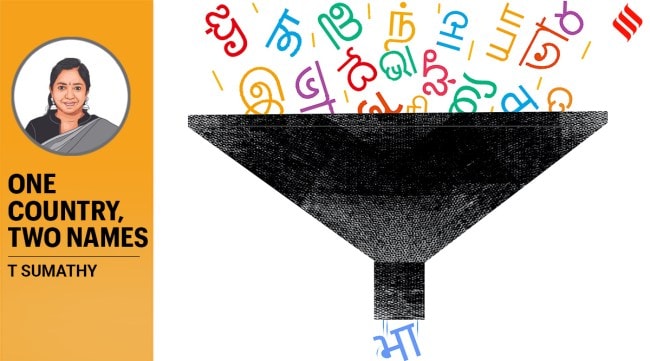Opinion Why BJP wants to give primacy to Bharat over India
In doing so, the government is ignoring the country's diversity, plurality and secularism. While the basic idea of India remains secular and tolerant, incidents like these signal intolerance towards religions other than Hindu

On September 5, images of a formal invitation extended by President Droupadi Murmu to the heads of state and ministers attending the G20 event in the national capital became public. The invitation referred to “the President of Bharat” rather than “the President of India”. It set off speculation that a resolution regarding the country’s name change could be moved during the special session of Parliament later that month, and that India would henceforth be called Bharat.
Changing the name of the country presents a complex challenge in the constitutional framework. Article 1 of the Indian Constitution explicitly refers to India as Bharat, which shall form a union of states. This essentially means that, constitutionally, “India” and “Bharat” are synonymous, differing only in usage, where the former is used in English and the latter in Hindi communications. The primary distinction lies in the choice of language that is used.
India has been using both English and Hindi as its language of official communication. However, it has become increasingly evident that ever since the Bharatiya Janata Party came to power at the Centre in 2014, there has been an emphasis on promoting the Hindi language. The BJP government has a clear objective, to establish a Hindu Rashtra, and in pursuit of this goal, they have placed a strong emphasis on promoting the Hindi language and Hindu culture.
So, what does it signify, the renaming of the country as Bharat? The answer to this lies in the Hindu scriptures.
The word “Bharat” is used in the Sanskrit language and was found in the Puranas. Here, “Bharat” is the geographical entity between the Himalayas in the north and the seas in the south that is politically divided into numerous smaller realms but is nonetheless referred to as a single unit. It also carries a religious connotation due to its origin and therefore Hindus experience a sense of affiliation and belonging in the country known as “Bharat”. The name “India” came into usage in the 17th century because of it being the land of the Indus river. It was popularised by the colonial rulers and is widely used since, officially as well as unofficially.
The change of name by amending Article 1 might become a hurdle for the government. But the BJP government must also keep in mind that by amending Article 1 it will also have to make several cascading changes given that both English and Hindi are used for official purposes, and it will entail removing ‘India’ from all official documents.
In the recent Monsoon Session of Parliament, the government announced three bills whose official titles are in Hindi — in the tenure of this government, we are seeing, for the first time, that bills have been officially titled in the Hindi language, without an official English equivalent, and are introduced entirely in Hindi in Parliament. These three bills are The Bharatiya Nagarik Suraksha Sanhita Bill which repeals the Code of Criminal Procedure, The Bharatiya Sakshya Bill which repeals the Indian Evidence Act and The Bharatiya Nyaya Sanhita Bill which repeals the Indian Penal Code. These bills are applicable to the entire territory of India, including non-Hindi speaking states. Not surprisingly, this imposition has invited sharp criticism.
In doing so, the government is ignoring the country’s diversity, plurality and secularism. While the basic idea of India remains secular and tolerant, incidents like these signal intolerance towards religions other than Hindu and denial of spaces to languages other than Hindi. The BJP government is inviting accusations of trying to establish northern supremacy over southern India.
As a member of Parliament, I often find myself revisiting the Constituent Assembly debates and appreciating the remarkable logic that underpins the drafting of our Constitution. Back in 1949, during the deliberations on Article 1, the members of the Assembly engaged in thorough discussions. In the end, they made a deliberate choice to use the phrase “India that is Bharat” to preserve linguistic neutrality and harmony.
I have articulated my opinion against the imposition of the Hindi language and in favour of promoting language neutrality. In the recent Monsoon session, I urged the government to ensure that all important government sites like the Employees’ Provident Fund Organisation (EPFO) should have the option of translating into regional languages, at least those that are mentioned in the 8th Schedule of the Indian Constitution.
In this context, the invitation sent by the office of the President of India points not to a constitutional amendment, but a change in established convention, which has deep implications.
It is imperative that the government realises the need for a sensitive balance amongst competing linguistic interests in India to ensure that each region can relate to the larger idea of India. This was indeed the reason for which those who drafted the constitution gave primacy to the use of “India” — as a compromise, to ensure that no constituent part of this country feels neglected or finds itself under pressure. The Union government’s bid to homogenise a large and diverse country must stop.
Sumathy, aka Thamizhachi Thangapandian, is a member of Parliament (Lok Sabha), and member of the Standing Committee on Communication and Information Technology





